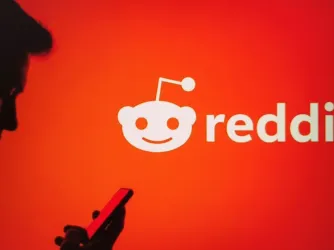Table of Contents
Replatforming: The key to canceling cancel culture?

Shutterstock.com
What began as the Year of the Tiger soon became the Year of the Censor as, month after month, unlucky educators, artists, and entertainers made 2022’s calendar of cancellations. A look back on last year reveals that cooler heads did not always prevail when people came together not to criticize expression on its merits, but to appeal to authorities to make it unavailable to everyone else.
In January, for example, Georgetown University placed Ilya Shapiro, the incoming senior lecturer and executive director for the Georgetown Center for the Constitution, on administrative leave for 122 days because of a tweet — posted before the time of his employment — that drew calls for his firing from detractors. In February, the Sundance Film Festival, too, caved to social pressure by denouncing Meg Smaker’s film “Jihad Rehab” after proudly platforming it months before, starting a chain of disinvitations of the film.
Come warmer weather, institutions only turned up the heat on anything that offended, provoked, or otherwise disturbed the sensibilities of, well, just about anyone. In March, Dartmouth College capitulated to hecklers, canceling a student event featuring journalist Andy Ngo due to unsubstantiated safety concerns. In July, a Minneapolis comedy club canceled Dave Chappelle’s show at the behest of some of its staff who objected to the comedian’s jokes about transgender people. Then, in August, Keller Independent School District officials ordered all books that people challenged the previous year — ranging from Toni Morrison’s “The Bluest Eye” to the Bible — removed from its school libraries.

FINALLY: Georgetown reinstates Ilya Shapiro following unwarranted 122-day investigation into protected political speech
2022 also exposed something else, perhaps even more important: Censorship campaigns do not always achieve their intended aims, even when they successfully drive individual institutions to deplatform. Instead, they are sometimes met with an equal and opposite reaction. This phenomenon might be described as “replatforming,” when deplatformed works or individuals find an audience in spite of — or even because of — the censorship they face.
In some cases, replatforming appeared to occur organically, as new audiences flocked to banned works anywhere upon discovering they had been censored somewhere. According to the market research company, NPD Group, some books — like George M. Johnson’s “All Boys Aren’t Blue” — experienced dramatic sales spikes shortly after being banned from school libraries, evidently benefiting from the “Streisand effect.”
In other cases, it required a push from people and organizations calling on censorial institutions to live up to their own stated values. Georgetown, for instance, finally reinstated Shapiro after letters from FIRE and college faculty appealed to the “basic academic freedom principles” that Georgetown promises.
Often, replatforming required spurned creators willing to take matters into their own hands. When Netflix asked comedian Andrew Schulz to censor his comedy special he refused, bought back the rights to the special, and turned a profit by streaming it independently. Smaker, too, financed her project independently, using crowdfunding to raise more than enough money to self-distribute her film.
In one sense, the reemergence of these works despite cancellations tells us what we already know: They appeal to an audience — or else they would not have been platformed in the first place. It also tells a little bit more: Single institutions don’t have a deathgrip on cultural production and distribution, no matter how much censors would like them to.
Cancel culture’s casualties
Still, we should be wary of viewing deplatforming as a non-issue or replatforming as an uncomplicated remedy to cancel culture. Even if, for instance, a speaker can address a crowd in some location, a coerced shut-down of that speaker’s planned event deprives a particular audience, in a particular place, of an experience they would otherwise have been able to access.
Further, replatforming often requires an existing degree of fame or a surge of media attention. Significantly, Smaker’s effort to self-fund “Jihad Rehab” gained traction only after she was profiled by The New York Times and interviewed by Sam Harris. And sales spikes of banned books are the exception, not the rule: The American Library Association indicates that 82 to 97% of challenged books are never even reported on.
What’s clear is that up-and-coming artists witnessing the consequences — financial, psychological, reputational — that befall people who tackle difficult topics may simply avoid those topics altogether.
What’s more, even when replatforming restores or increases someone’s public presence, it doesn’t necessarily remedy the psychological and reputational harms of cancellation, which disproportionately befall those who never had a big platform in the first place. In Smaker’s case, for instance, after Sundance rejected her film, once-supportive individual and institutional backers denounced her and her project. “What I didn’t realize then, and what I realize now,” Smaker said in an interview with Harris, “is just the extent of [cancellation] and the mental and emotional toll it takes when you have people that you trusted turn on you.”
Whether these people and institutions rejected “Jihad Rehab” on principle or due to fear of backlash is impossible to say for certain. Cancel campaigns poisoned the well. What’s clear is that up-and-coming artists witnessing the consequences — financial, psychological, reputational — that befall people who tackle difficult topics may simply avoid those topics altogether.
Indeed, according to FIRE’s 2022 Free Speech and Cancel Culture survey, 47% of Americans are at least occasionally afraid to say what they believe because of the potential consequences, and 22% say they feel this way “very” or “fairly” often. In such an environment, creative work will increasingly be seen as a game for the well-established, those who can materially and reputationally weather deplatforming. When that perception becomes reality, culture becomes more homogenous and less attuned to the perspectives of ordinary people.
Spiraling toward stagnation
Finally, while replatforming can help individual creators find success outside the institutions that deplatformed them, it hastens social fragmentation by pushing them into “spirals of silence,” surrounded only by those with whom they agree.
“Ideological homogeneity breeds groupthink, overconfidence, and group polarization,” said Komi Frey, FIRE’s director of faculty outreach, “which leads groups to become increasingly intolerant of — and hostile to — dissent.” When left to fester underground, uninformed or reactionary views may later re-emerge in the public consciousness in unexpected ways. As Walter Kirn tweeted, “You can censor it, but it doesn’t go away.”

College of Psychologists of Ontario to Jordan Peterson: Undergo reeducation or lose your license
The College of Psychologists of Ontario is threatening to revoke Peterson’s psychology license if he refuses to undergo reeducation, for an unspecified duration, over complaints about his tweets.
The siloing of people and perspectives — driven by the cycle of deplatforming and replatforming — also hinders culture’s affirmative function: Helping us question our assumptions and progress toward new knowledge. “Culture is not a diversion at the end of the day,” writes William Deresiewicz. “It should be the inner substance of every day, the means by which we question, continually, our stock notions and habits.”
Viewed through this framework, coerced cancellations are not a legal problem, as people and organizations — rightly — maintain the legal right to associate with whoever and whatever they want. But they are a cultural problem, because overly parochial behavior hinders the interplay of ideas that creates and furthers culture. At worst, this makes our convictions brittle, prone to breaking. At best, it makes media boring.
Today’s splintering mainstream foreshadows tomorrow’s emergence of countless bespoke paths — curated for every niche interest, affiliation, and identity. This is great news, to be sure, for castaway thinkers and artists who may yet find platforms and audiences to accommodate them. Whether it’s great news for all of us depends on whether a belief in free expression rises with these new audiences, in these new spaces. It depends on whether we are capable of building communities that view internal disagreement as a feature, not a bug.
Recent Articles
Get the latest free speech news and analysis from FIRE.

VICTORY: Catholic University of America reverses Reddit ban on campus Wi-Fi

Online speech is powerful. That’s why Iran is silencing it.

A royal Paine


